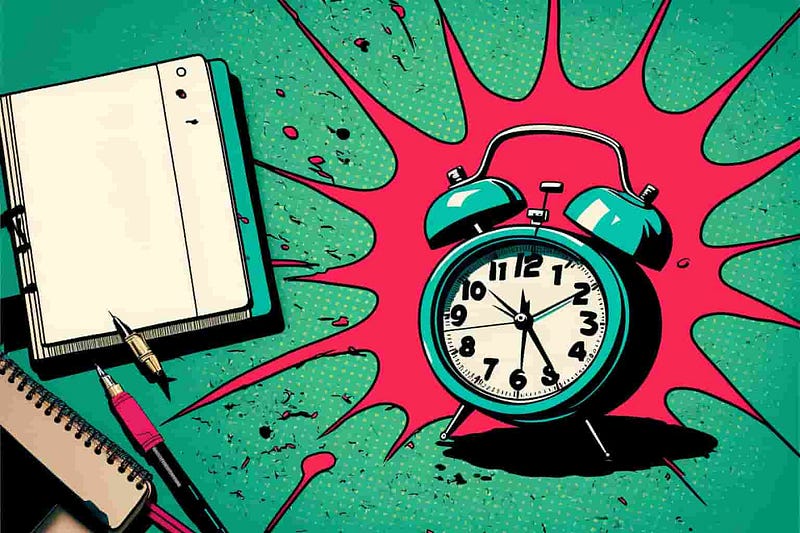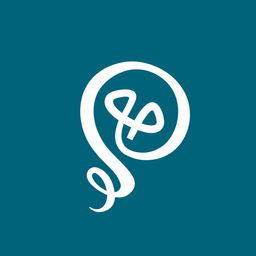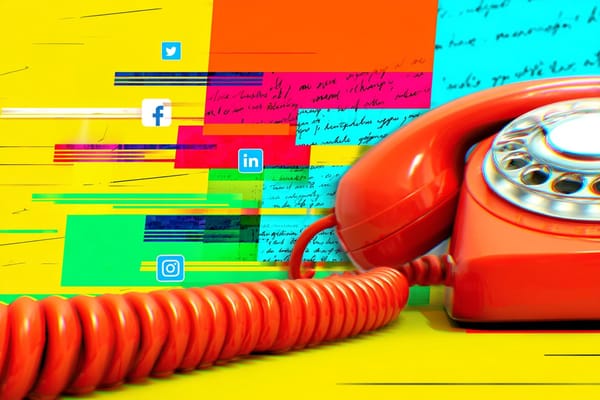A Time for Rest and a Time for Hustle
Know how to apply your energy as a creator.

I’m not a fan of hustle culture. I lived that life for a long time, spending more than fifteen years in fintech. I was always gunning for the next move, the next promotion, the next product release.
Then the pandemic hit and suddenly, I was tired of it all. It started with stress and anxiety over Covid but then continued to build until it reached a crescendo. I realized that I was tired of the day-to-day grind of my career.
And so, I quit. Like so many other people, I joined The Great Resignation and said goodbye to hustle culture. I found a job in content marketing with an agency that embraces a balance of work and life. I have also landed in the creator economy, with some regular freelance work and focusing on my own projects.
I rarely feel overworked now. But there are times when I think hustle is warranted, especially for freelancers and creators. It should be done in a thoughtful, temporary way, with a specific goal in mind.
Hustle when you’re changing directions
When I knew I wanted to quit my job, I hustled—a lot.
I was not only looking for a new job, but I was also embarking on a complete career pivot. To break into content marketing, I realized that I would need a portfolio.
I began freelancing on the side for an agency that was little more than a content mill. I would put in my time at my full-time job at the fintech, and then wake up early and stay up late writing blog posts for companies. (This was on top of having three kids at home for remote learning). The days were long and exhausting.
But I also knew that this particular way of working wouldn’t last forever. I only needed to freelance long enough to build a portfolio.
After about two months, I felt that I had a solid body of work. I turned my attention to applying for jobs — no small task in the creative field, with many applications needing specific writing samples. This was also a very time-consuming process.
But it paid off. Within about six weeks of commencing my job search in earnest, I landed a job. I also landed a regular freelance client, writing about a subject matter that I enjoy.
Sometimes freelancing full-time can have a longer hustle period in the beginning. You may be trying to earn enough and build up a client base. But then you reach a point of consistent work (and psstttt…. raise your rates regularly so you can hustle even less!).
Hustle when you’re trying to promote something new
A book launch. A podcast. An online course. There are scenarios when you need to hustle to give something you create the attention it deserves.
To be clear: I am not suggesting that you hustle through the creative process itself. Unless there is a specific deadline, there’s no need to push yourself. You could end up with a resource that falls flat if you rush for the sole purpose of getting your creation “out the door.”
But when you are ready, you should plan for the added effort to reach an audience:
- Research the best ways to promote your specific creation
- Plan your engagement across different channels
- Line up people who can help you promote your product: friends, industry leaders, or fellow creatives
The big effort will come when you launch. You may spend weeks or even months relentlessly promoting your creation. The more momentum you can build in the beginning, the more your hard work will pay off. And psychologically, there’s a lot to be said from initial satisfaction versus waiting months for your creation to build steam.
My big launch was a new website. This is one project that is the opposite of what I described above: the hustle came in the behind-the-scenes work, with the end result not needing a lot of promotion. But let me explain.
I knew that I needed a new website, something with more flair now that I was getting regular freelance work. My old website was embarrassing. I spent months tinkering with a new design without ever making real progress.
Then I had a LinkedIn post go viral. Suddenly my website was seeing a lot of activity. While the spike was temporary, it was the push I needed. For about a month, I pushed myself to build my new website, culminating in a migration from WordPress to Webflow.
In this case, it was worth the hustle to finish this project so that I could release my new website into the world — something that was going to benefit my work as a creator.
Build consistently, so you don’t have to hustle
“Slow and steady wins the race”? Maybe not slow, but definitely steady.
A freelancer’s life is constantly in motion. Few have 100% guarantees with their income. You always want to be thinking of ways to attract new clients and build your portfolio. Consistent engagement is the way to build an audience and potential client pool that never wanes.
If you suddenly find yourself in need of more clients and you haven’t been actively maintaining your online presence, you could find yourself struggling to “catch up” to others who have been putting themselves out there.

If you put time each week into your portfolio, your social media channels, and engaging with other people, you’ll have more consistency. You can find a volume and pace that works for you. Then just maintain the habits; they will become even easier the longer you do them.
You’re the person who can put up guardrails as a freelancer. Whether it’s the number of clients or the number of hours, you need to decide how much is “too much.” Creatives and freelancers have a lot of control over their time and it doesn’t have to involve hustle.
Check out my free eBook: 17 Smart Tools Solopreneurs Need to Start, Grow, and Scale.






